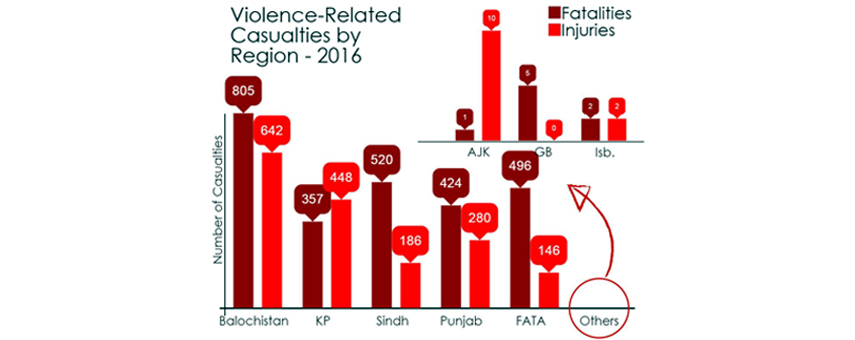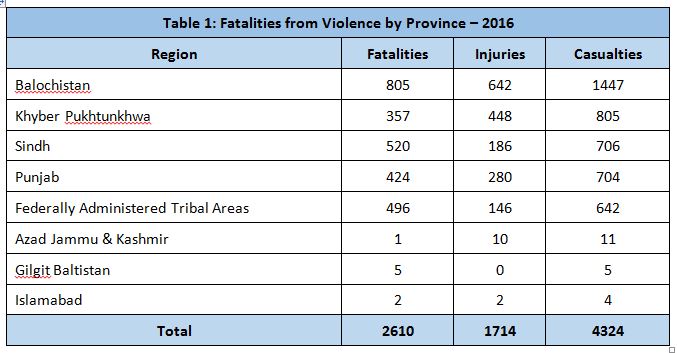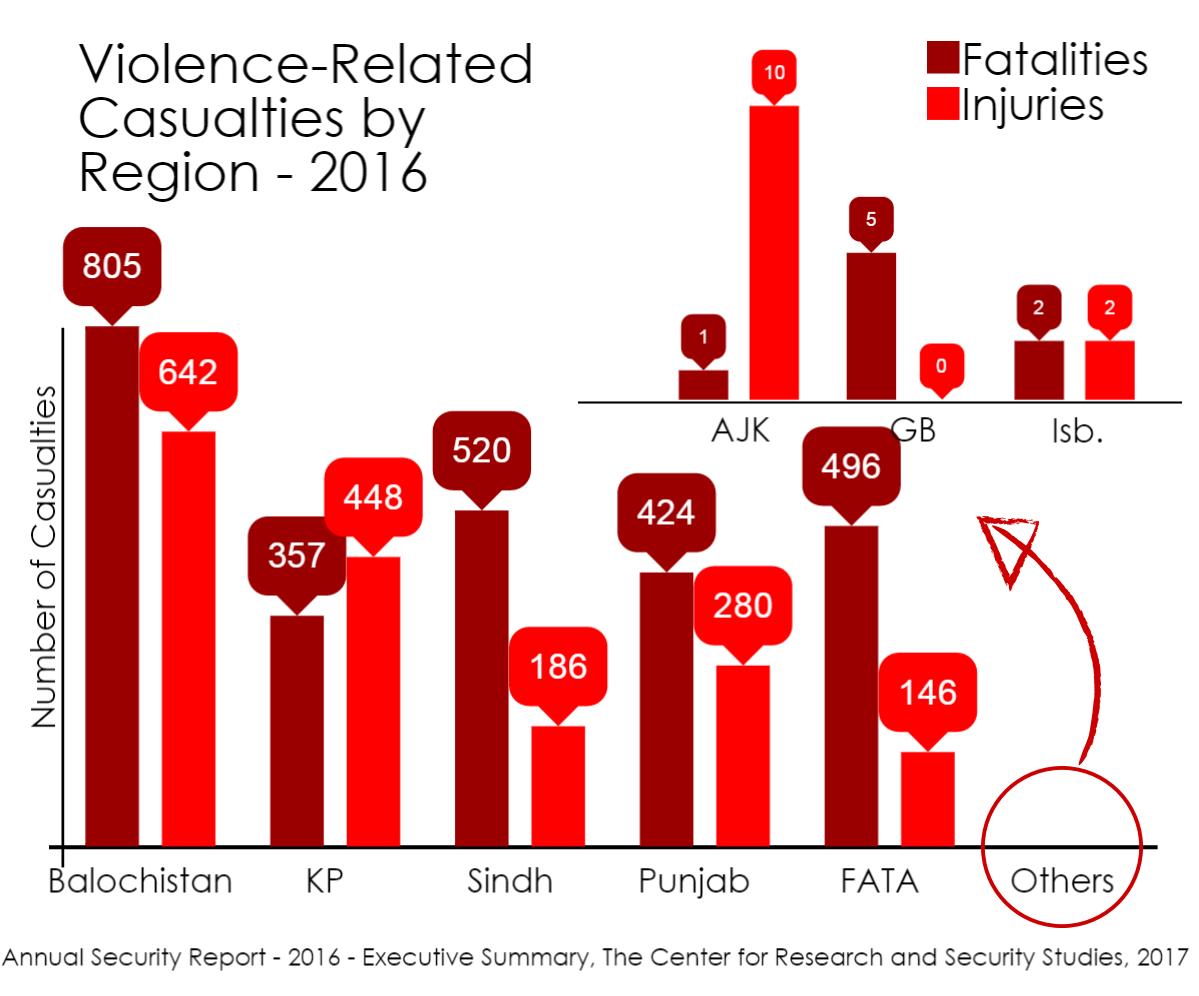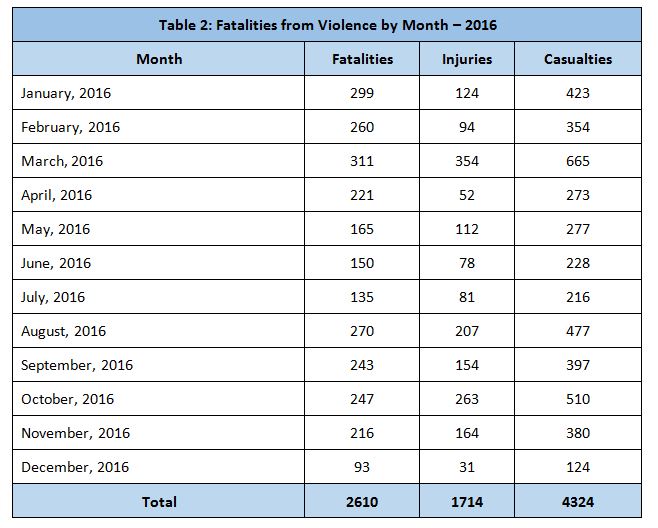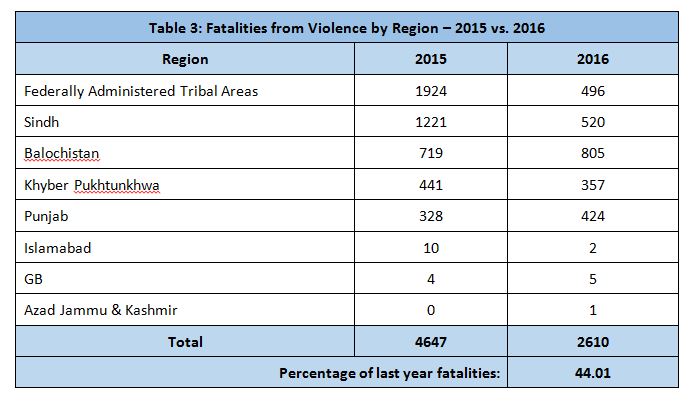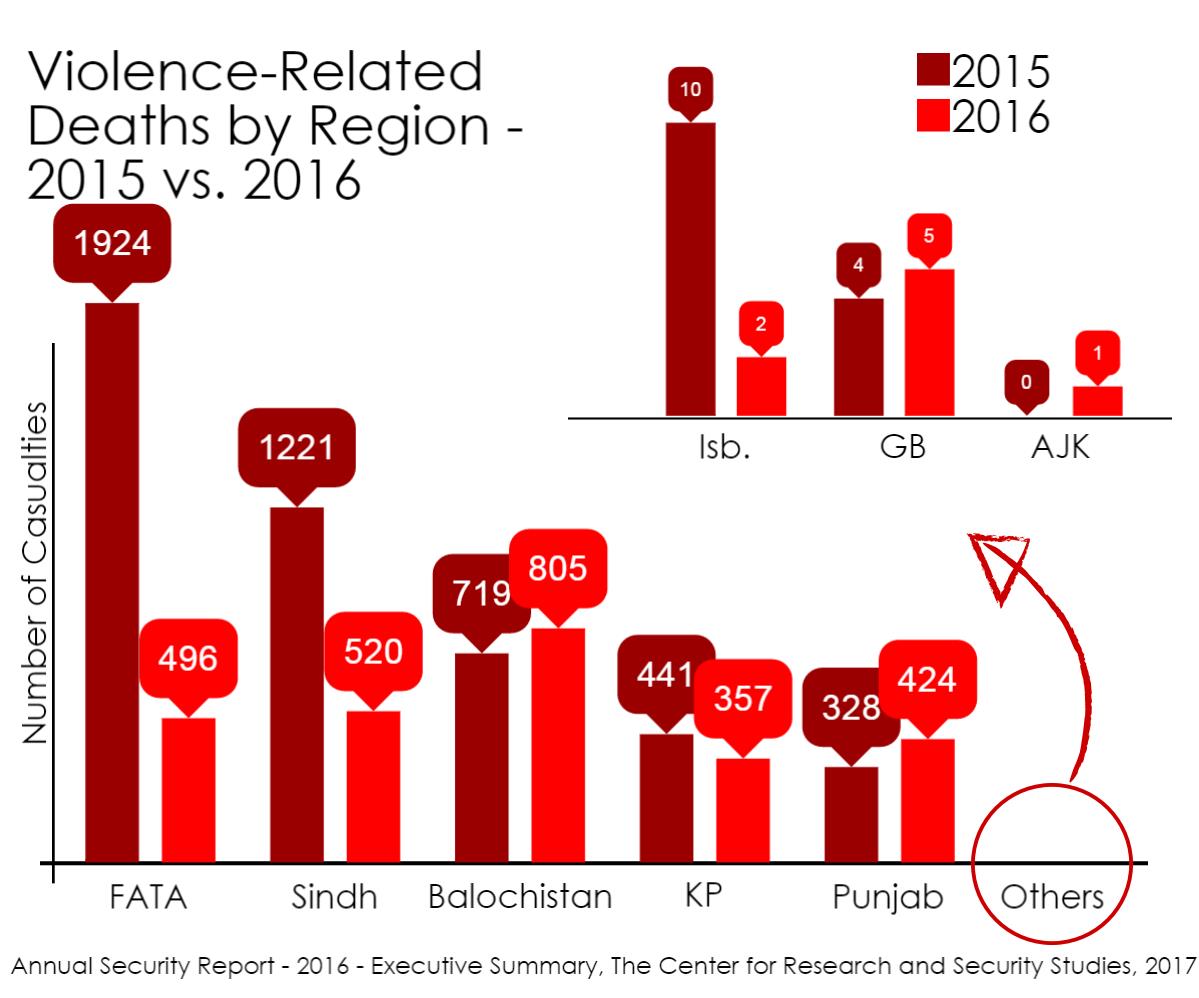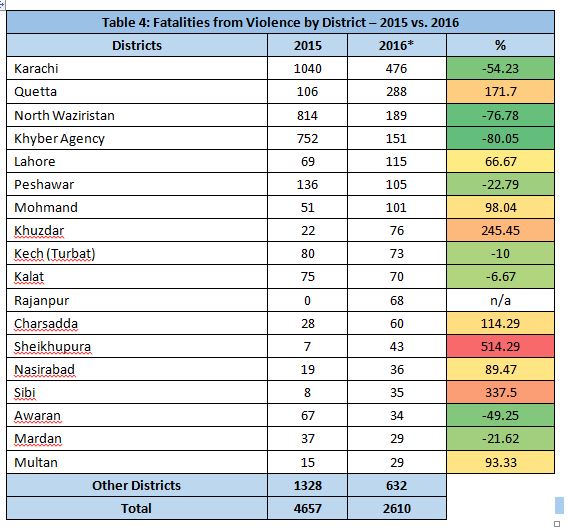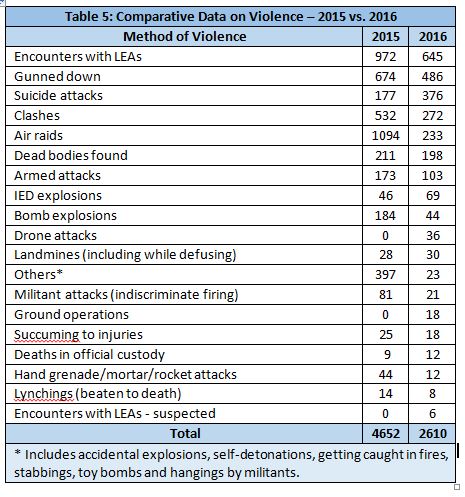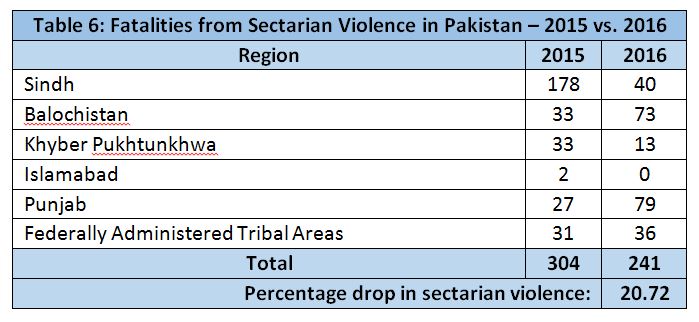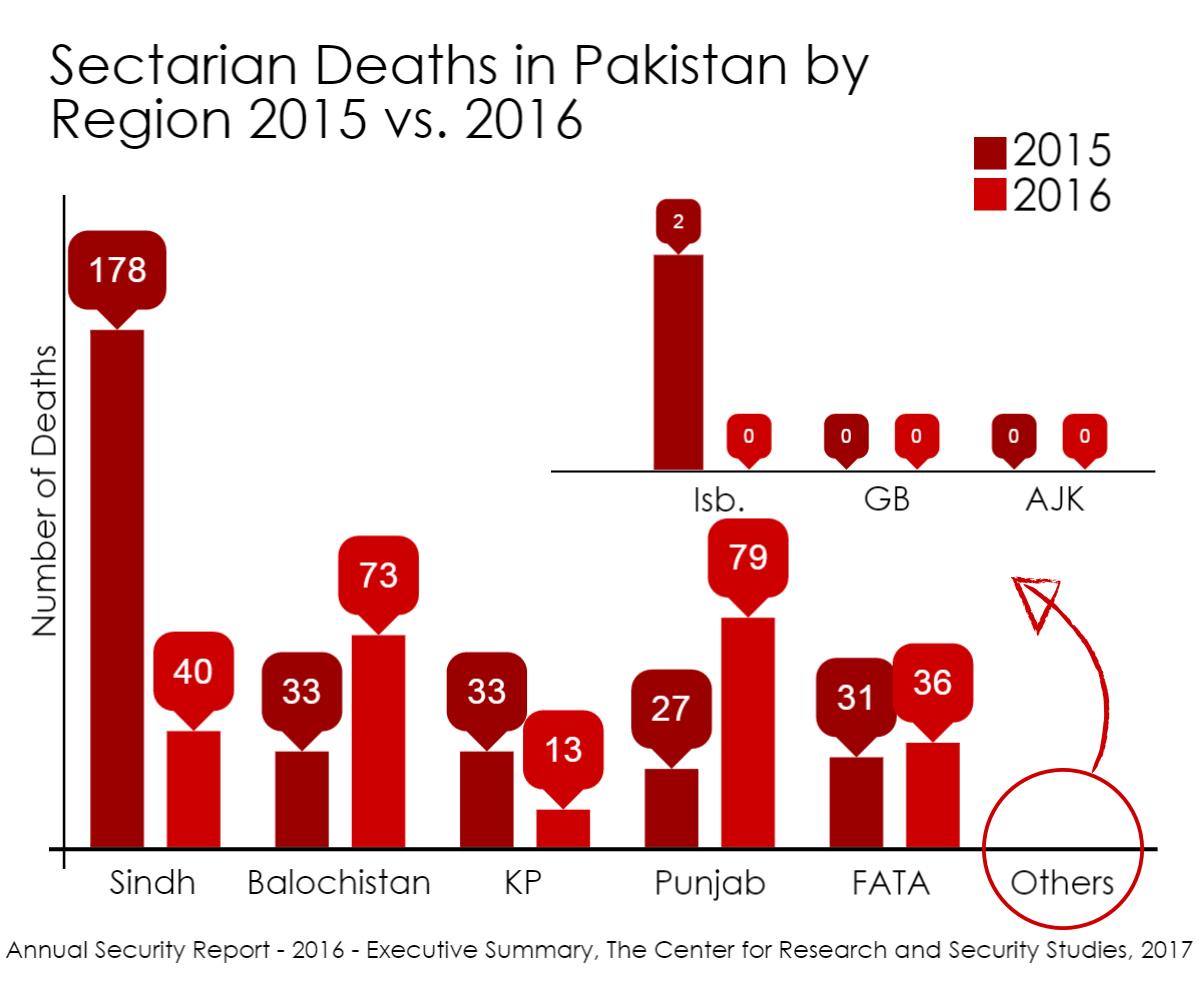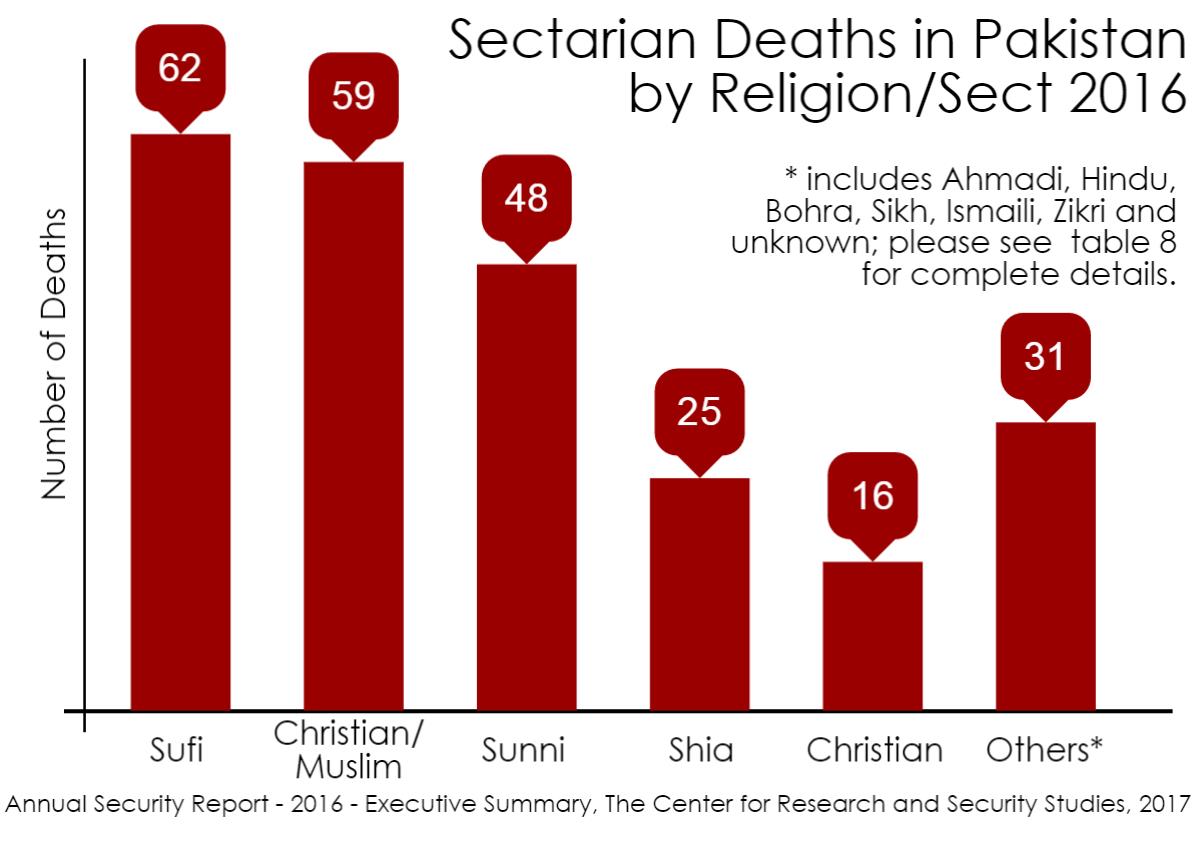Fatalities from Violence by Province – 2016
Pakistan appeared to have made prominent success this year in curbing the sources of violence that had been threatening peace and security not just in Pakistan but in the region. There was a nearly 45% reduction in the number of violence-related fatalities in 2016, which continued the trend of reduction from 2014. In fact, since 2014, there has been an overall reduction of nearly 66%. From a total casualties of 6,572 (4,647 dead and 1,927 injured) reported in 2015, the figure came down to 4,324 (2,610 dead 1,714 injured) in 2016 (table 1). This reflects the success of the kinetic operations across the country by security forces, both military and civilian
As reflected by the data, a downward trend in violence was observed throughout the year, and December 2016 was the least violent month of the year (table 2).
Fatalities from Violence by Region – 2015 vs. 2016
Regionally, there were some exceptions. Two provinces, Punjab and Balochistan, had a marginal increase in violence this year. Fatalities from violence in Balochistan went up from 719 in 2015 to 798 this year, an upsurge of nearly 10%. Punjab lost 424 persons to violence during this year that was the highest number of fatalities in the province during the last four years. Both of these provinces were the targets of suicide attacks that increased the casualty count. Balochistan had four suicide attacks, leaving 97 persons dead, including 52 lawyers, while Punjab had one suicide attack in Gulshan Iqbal Park, Lahore that left 74 persons dead of whom 29 were children.
Districts with Highest Fatalities in Pakistan – 2015 vs. 2016
Karachi, Quetta, Lahore, and Peshawar, all of which host provincial capitals, were among the districts most affected of violence during this year (table 4). However, when compared with the last year figures, a significant drop in fatalities was recognizable during this year at all capital cities with the exception of Quetta and Lahore. Even Karachi, still the most violent district in the country, exhibited a sharp decline in the number of fatalities during this year (table 4).
Comparative Data on Sources of Violence – 2015 vs. 2016
Tougher security measures forced militants and criminals to adopt new methods and strategies. They relied more on the use of improvised explosive devices, landmines, and suicide attacks to inflict death to 474 persons this year as opposed to 251 that fell victim to these forms of violence last year (table 5).
Fatalities from Sectarian Violence in Pakistan – 2015 vs. 2016
Overall, sectarian violence came down by 20% in the country during this year which left 241 dead, compared against 304 persons who died last year. Regionally, it declined in Sindh and KP while in Punjab, FATA, and Balochistan there was a significant increase in sectarian violence (table 6). More than 70% of the people who lost their lives in sectarian violence were the victims of suicide attacks.
Four districts of the country suffered the highest number of fatalities from sectarian violence during this year, with Lahore topping the list. This year, sectarian violence was reported from places that were hitherto unaffected like Shah Norani (Khuzdar), Mirpur Mathelo, Hyderabad, Chakwal, Buner, and Badin.
This year, the sectarian violence in the country was not only selective in targeting soft and unprecedented locations, but non-selective when targeting the victims. The highest fatalities from sectarian violence were recorded at Gulshan Iqbal Park in Lahore where the Christian community was apparently targeted on their Easter Day festivities. However, only 14 out 74 persons were identified as Christians. The other highest victims of sectarian violence were Sufi pilgrims at Shah Norani Shrine.
Conclusion
The drastic reduction in violence-related fatalities in Pakistan is a positive and welcome development. Since 2014, deaths resulting from violence have dropped by over 66%, or 2/3rd. This achievement notwithstanding, it must be said that this push has primarily resulted from two primary factors. These include the conclusion of Operation Zarb-e-Azb, launched in FATA in June, 2014, as well as the extensive urban pacification and political militancy targeting Rangers’ operations in Karachi. Numerous smaller factors, such as a move against hate speech, combing operations across the country, as well as insurgency mollification in Balochistan have contributed to the improving the security situation.
This momentary and relative reprieve may, however, be fleeting and unsustainable. The government has done next to nothing to address the myriad of problems that plague the police departments in Pakistan, or reform the criminal justice system to provide wide-scale relief to the public in a timely, efficient manner. NACTA remains a stillborn baby, flailing without proper funding or resources. These are crucial elements of the National Action Plan that need implementation, in addition to the kinetic operations above, in order to secure a long term future for Pakistan.
Note: you can see this data online: [https://magic.piktochart.com/output/4059931-crss-pct-executive-summary]. Please click the “Present” button in the left side of this window.

